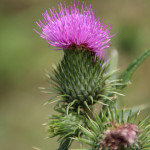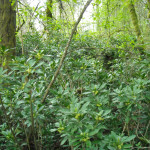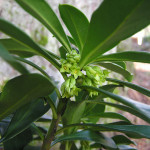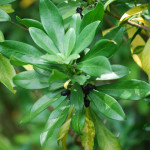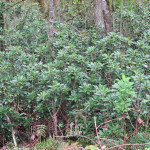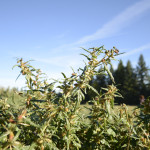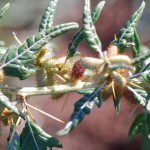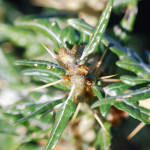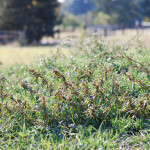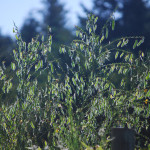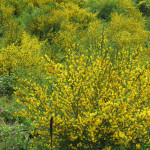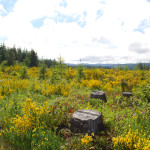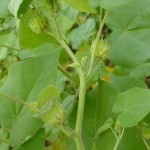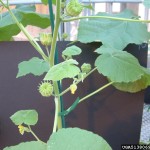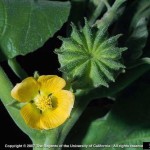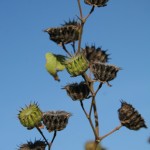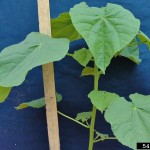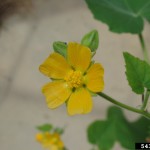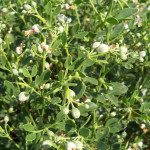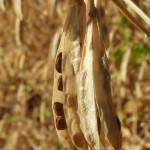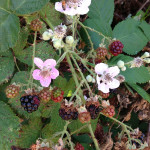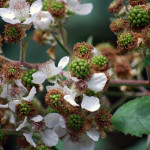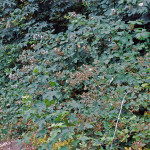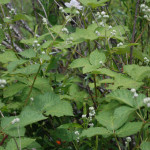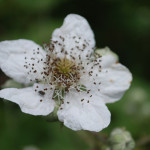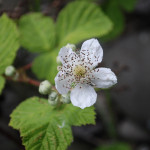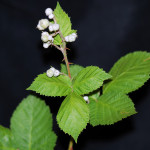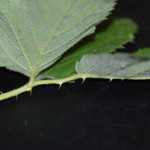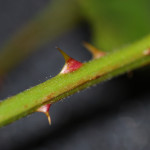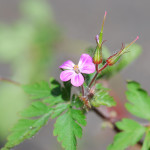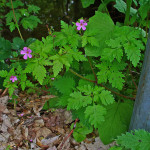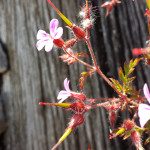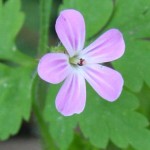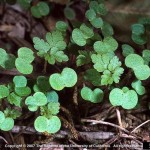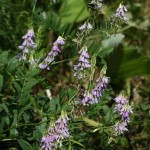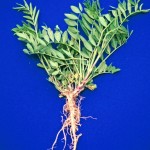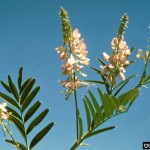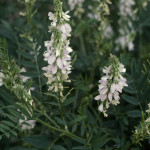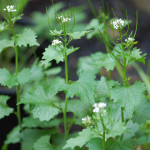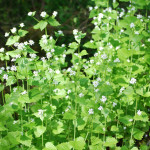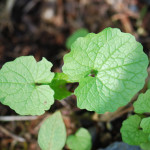Gallery:
- Bull thistle seed head
- Bull thistle (Cirsium vulgare) flower head
- Bull thistle stem and flowers
- Bull thistle seedling
Common names:
Bull thistle, bank thistle, bird thistle, blue thistle, bur thistle, button thistle, common thistle, Fuller’s thistle, plume thistle, roadside thistle, spear thistle
Scientific Name:
Cirsium vulgare (syns. Ascalea lanceolata. Carduus lanceolatus. Carduus vulgaris, Cirsium abyssinicum, Cirsium lanceolatus, Cirsium lanceolatum var hypoleucum, Cnicus lanceolatus)
Description:
Bull thistle is a tall, prickly biennial with spiny flowers. The erect plant stands around 2 to 5 feet tall on rigid, hairy, branched stems that usually die back during winter. Rosettes are up to 60 cm wide Bull thistle is native to Europe and Asia and can be found throughout the United States. Bull thistle rosette leaves are green, hairy, 10-40 cm long, lobed and toothed, elliptical to lanceolate with prickles. Purple disk flowers of the Bull thistle plant are surrounded by rows of spine tipped phyllaries with one bractlike leaf below. Flowers appear from June to October with 1 to 5 heads per branch. Petals are often purple but can be white. Flowers are found at the end of branches, round to umbrella shaped and are 1.5-2 inches wide.
Life cycle:
Height of mature plants
2 to 5 feet
Flower color:
Purple
Bloom time:
Typically blooming from June to October.
Look-a-likes:
There are several native and nonnative thistles that resemble bull thistle. Please see this guide for identification clarification.
Habitat:
Bull thistle colonizes primarily in disturbed areas such as pastures, roadsides, and ditch banks as well as in hayfields, disturbed prairies and logged mountain areas.
Impacts:
Bull thistle may outcompete native plants and desirable wildlife and livestock forage plants. It can invade most any disturbed habitat and grow in dense thickets. Hay price may decline with the presence of bull thistle.
Noxious Weed Listing:
- WeedWise: Maintenance
- State of Oregon: Class B
- State of Washington: Class C
- Four County CWMA: Class C
Origin:
Europe, Asia and Northern Africa
Present in Clackamas County:
Yes
Links:
Oregon Noxious Weed Profile
Washington Noxious Weed Profile
King County Noxious Weed Profile


